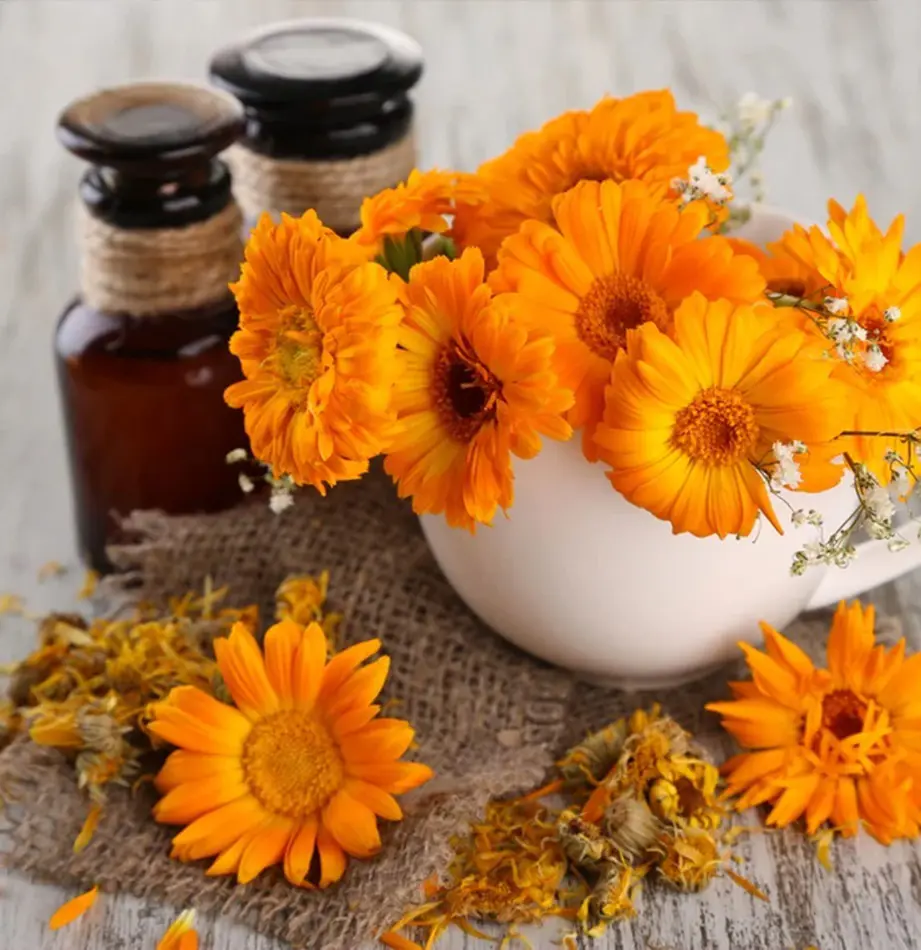How To Grow & Care For Maidenhair Fern
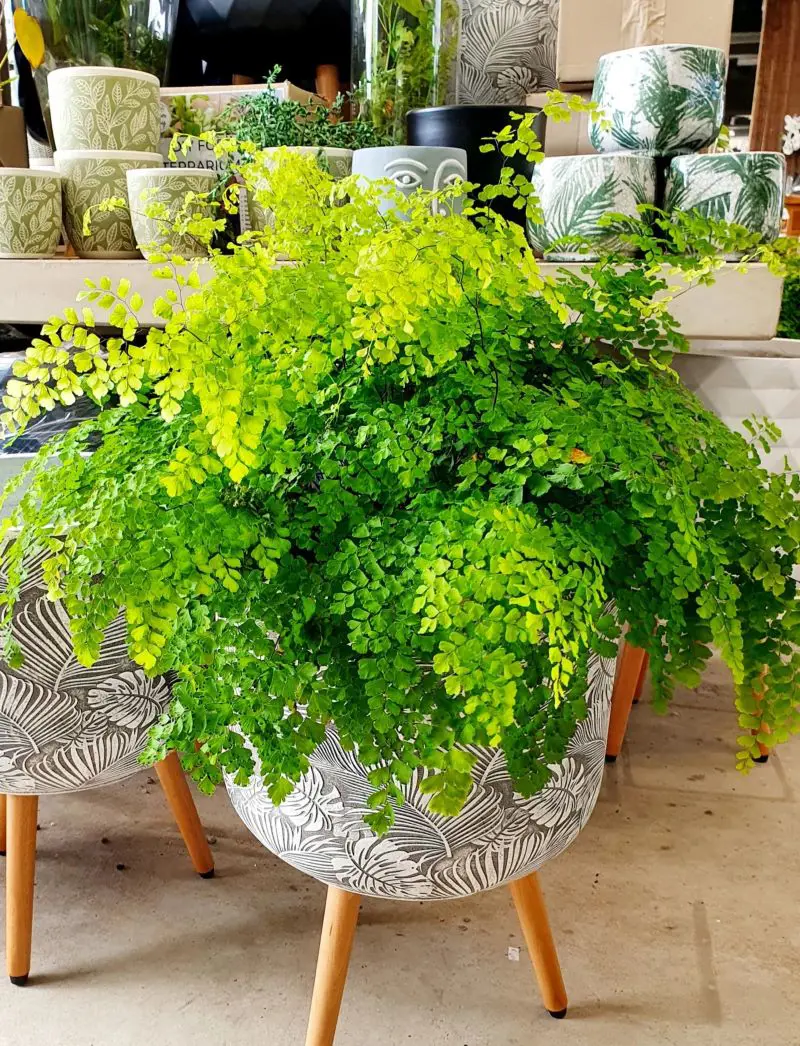
This post may contain affiliate links. If you make a purchase through links on our site, we may earn a commission.
Maidenhair fern, with its delicate and lacy foliage, is an excellent choice for interior plant enthusiasts. The plant is known for its ability to shed water without getting wet.
Beyond its aesthetic appeal, owning this fern can bring a touch of nature into indoor spaces, creating a calming and tranquil atmosphere.
Maidenhair Fern Overview
| Scientific Name | Adiantum raddianum |
| Common Names | Maidenhair fern |
| Family | Pteridaceae |
| Type | Perennial |
| Size | 1–2 ft. tall |
| Sun Exposure | Indirect light, partial shade |
| Soil Type | Moist, Well-drained |
| Soil pH | Neutral |
| Hardiness Zones | 9a-10b (USDA) |
| Origin | North America and West Indies |
What Is A Maidenhair Fern?
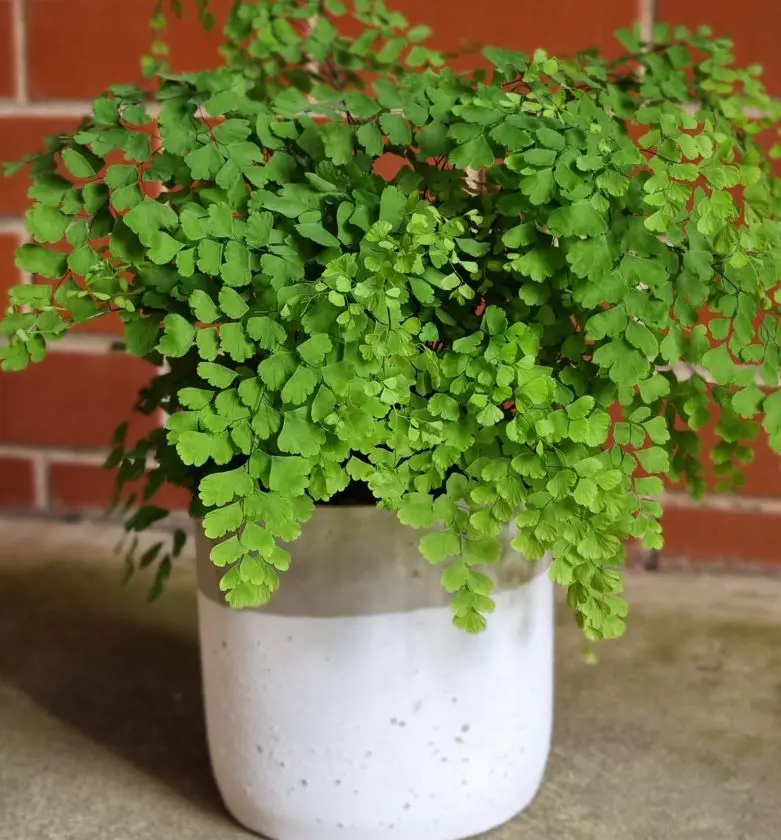
The maidenhair fern is a type of perennial belonging to the Adiantum genus, which comprises more than 200 species. It can grow up to three feet tall and thrive in warm, humid conditions.
The fern features palm-shaped fronds with three to eight fingers each, standing 1 to 2 feet tall on dark, wiry stems. The fronds die back each year, and new leaves unfurl each April.
Maidenhair fern loves forested, humus-rich soil, but it will also grow in heavier soils. The scientific name Adiantum derives from the Greek and means roughly ‘does not get wet’. When it rains, the stems sag, and the water rapidly slides off the leaves.
Maidenhair Fern Care
Caring for maidenhair ferns is relatively easy, as they prefer environments with high humidity and indirect sunlight. This makes them perfect for indoor spaces like bathrooms or kitchens where there's moisture in the air.
Keeping their soil consistently moist and misting their leaves regularly is essential for their care. However, it's important to avoid placing them in direct sunlight, as it can scorch their delicate foliage.
Light
Maidenhair ferns prefer to live in areas with bright, indirect light. This means they like sunlight that is not too harsh, like the light that filters through curtains or trees. So, it's best to place them near a window where they can get this type of light.
They should not be placed in dimly lit areas as they won't receive enough light to grow properly. If you set them in such spots, they won't get enough light, and this can cause their growth to slow down. Without enough light, their leaves may turn yellow, and they might even die.
Soil
These ferns love to live in free-draining soil that retains moisture without becoming waterlogged. A good mix for them is one part peat moss, one part perlite, and one part regular potting soil. This combination provides the right balance of nutrients and drainage.
It's important to check the soil regularly and water when the top inch feels slightly dry to the touch. Overwatering can lead to root rot, while allowing the soil to dry out too much can cause stress to the fern.
Water
Watering these plants requires a delicate balance, and it's best to hydrate them regularly but not excessively. Overwatering can lead to soggy soil, yellowing fronds, or even mold growth on the soil surface.
When watering, thoroughly moisten the soil, but allow excess water to drain away freely. Always check the soil moisture before watering again, ensuring it's slightly dry to the touch.
Temperature
Maidenhair ferns are not too picky in case of temperature. They generally prefer temperatures between 60 to 75 degrees Fahrenheit (15 to 24 degrees Celsius). As long as your home is within this range and there are no extreme temperature fluctuations, your fern should be just fine.
Humidity
These ferns appreciate living in high-humidity conditions, ideally around 50-80%. To maintain these conditions, you can place a humidifier near the plant or group it with other companion plants. If the fronds are getting dry frequently, you may mist the plant regularly with a spray bottle filled with water.
Fertilizer
Fertilizing maidenhair ferns is not always necessary, but feeding them once a month during their growing season can help them grow healthier and more vibrant. Feed them with diluted liquid fertilizer specifically formulated for houseplants, and water the fern thoroughly before fertilizing. This will help to prevent root burn.
Pruning
You may prune your ferns at any time of the year when they start to look leggy and if there are any dead fronds. To prune, simply use clean, sharp scissors or pruning shears and snip off any unhealthy fronds at the base of the stem. Be sure to only remove a few fronds at a time. This will avoid stressing the plant too much.
Propagating Maidenhair Fern
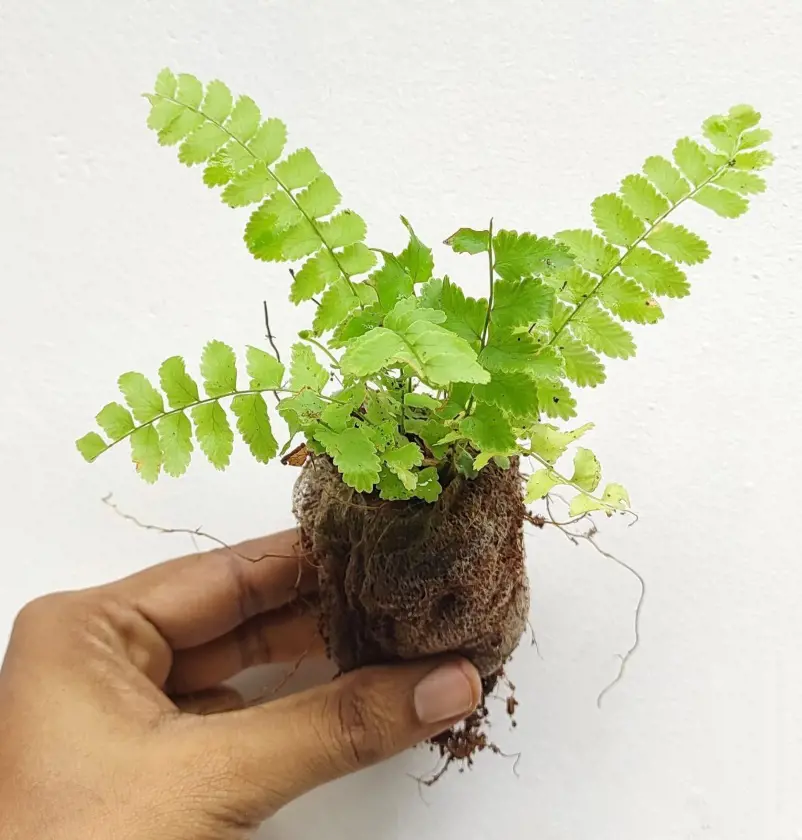
Similar to other ferns, maidenhair ferns can also be easily propagated through division. This involves separating the plant into smaller sections, each with its own roots and fronds. Here is how to do it.
Remove the fern from its current pot: Water the fern thoroughly for 30 minutes before loosening the soil. Carefully tip the pot upside down and tap the rim until the plant slides out.
Examine the root ball: Look for natural divisions where the plantlets (small ferns) emerge from the main crown. These are your ideal separation points.
Divide the plant: Using your sterilized knife, carefully cut through the root ball between the divisions, ensuring each new plantlet has healthy roots and at least a few fronds. You can gently tease the divisions apart with your hands if needed.
Plant the divisions: Fill each pot with fresh potting mix, leaving enough space for the root ball. Then, carefully position each division in its pot, spreading the roots gently. Fill in the remaining space with potting mix and firm it down lightly. After, water each pot until the water runs out of the drainage holes.
Provide high humidity: Maidenhair ferns thrive in humid environments. So, mist the plants regularly or place them on a humidity tray filled with pebbles and water.
Bright, indirect light: Choose a location with bright, indirect light. Avoid direct sunlight, which can scorch the delicate fronds. It may take a few weeks for the new divisions to establish themselves. During this time, keep the soil moist and provide consistent humidity. Don't fertilize until new growth appears.
How To Grow Maidenhair Fern
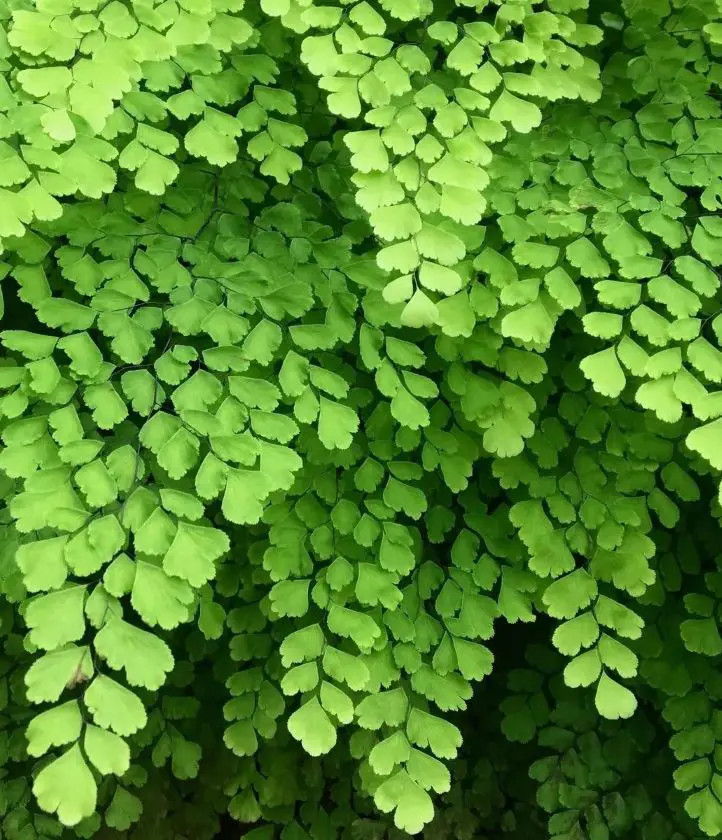
Maidenhair ferns, with their ability to thrive in low-light conditions and limited sunlight, can be easily grown in pots or hanging baskets. Growing them is not difficult; it can be achieved with just a few simple steps. Here's a guide for growing maidenhair fern.
Where to Plant
If you live in a warm, humid climate with mild winters, you can try growing your fern outdoors in a shady, sheltered location. On the other hand, if your climate experiences harsh sunlight and cold temperatures, it's best to place them in a spot with bright, indirect light, such as near a north-facing window.
When to Plant
Technically, these plants can be planted indoors year-round. Yet, for the best results, the ideal time would be from March through April, as these months coincide with its natural growing season.
What You Will Need?
- Maidenhair fern plant or spores
- Pot or garden bed with well-draining soil
- Organic compost or fertilizer
- Watering can or hose
Types Of Maidenhair Fern
There are about 250 species of maidenhair ferns in the genus Adiantum, though some researchers place it in its own family, Adiantaceae. Some of the most popular types of maidenhair ferns include:
- Southern maidenhair fern: This is the most common type of maidenhair fern, and it's often used as a houseplant. It has delicate, fan-shaped fronds that are a beautiful shade of green.
- Venus' maidenhair fern: This fern is known for its large, glossy fronds that can grow up to 2 feet long. It's a bit more challenging to care for than the southern maidenhair fern, but it's definitely worth the effort.
- Maidenhair spleenwort: This fern is often confused with the true maidenhair fern, but there are a few key differences. Its fronds are more deeply lobed, and they don't have the same water-repellent properties.
- Walking fern: This unique fern has long, thin fronds that grow from the tips of the previous year's growth. These fronds eventually root and form new plants, which is why it's called the walking fern.
- Cliff maidenhair fern: This fern is native to the Andes Mountains, and it's known for its delicate, lacy fronds. It's a bit more challenging to grow than some other maidenhair ferns, but it's a beautiful addition to any collection.
Challenges And Issues With Maidenhair Fern
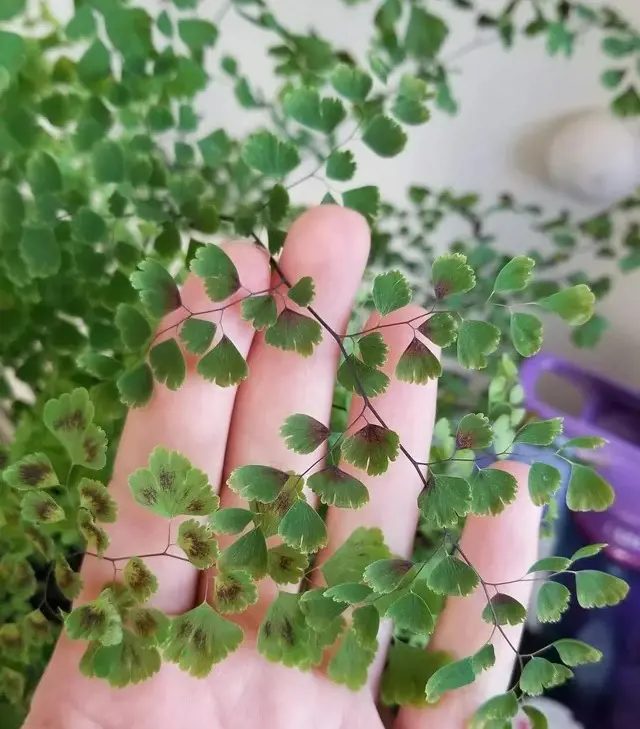
Some common problems with maidenhair fern include:
Frond Curling
Cause: The most common problem is frond curling, where the delicate fronds of the fern start to curl inward or downward. This issue can be caused by various factors, including inadequate humidity levels, too much or too little water, or exposure to direct sunlight.
Solution: Ensure consistent humidity levels, water the fern regularly, and provide indirect sunlight or filtered light to prevent stress.
Common Pests
Cause: Another challenge faced by these ferns is the presence of various common pests and fungal diseases. One such pest is the spider mite, which infests ferns and causes damage by sucking sap from the leaves.
Solution: Maintain adequate humidity levels and regularly mist the plant to prevent infestations. If spider mites are detected, promptly treating the fern with insecticidal soap can help eliminate them and protect the fern from further damage.
Leaves Turning Yellow
Cause: Yellowing leaves can indicate various problems such as overwatering, underwatering, nutrient deficiencies, or even root rot.
Solution: Assess the fern's watering needs and ensure that it's not sitting in waterlogged soil. Additionally, providing a balanced fertilizer and repotting the fern if necessary can help improve its overall health and prevent further yellowing of the leaves.
Recent posts
Plant Care
Plant Care
10 Calendula Health Benefits and Possible Side Effects
[image-1] Commonly used in medicinal preparations in several medicine systems, calendula is an annual herb in the daisy family (Asteraceae) originating from southern Europe and the Eastern Mediterranean area. It is suitable for borders, beds cut flow...
Plant Care
How To Plant, Grow and Care Majesty Palm
The majestic palm, scientifically known as Ravenea rivularis, makes for a stunning indoor tree with its lush and grand fronds. Originating from Madagascar's river banks, this resilient houseplant is cherished not only for its beauty but also for its ...
